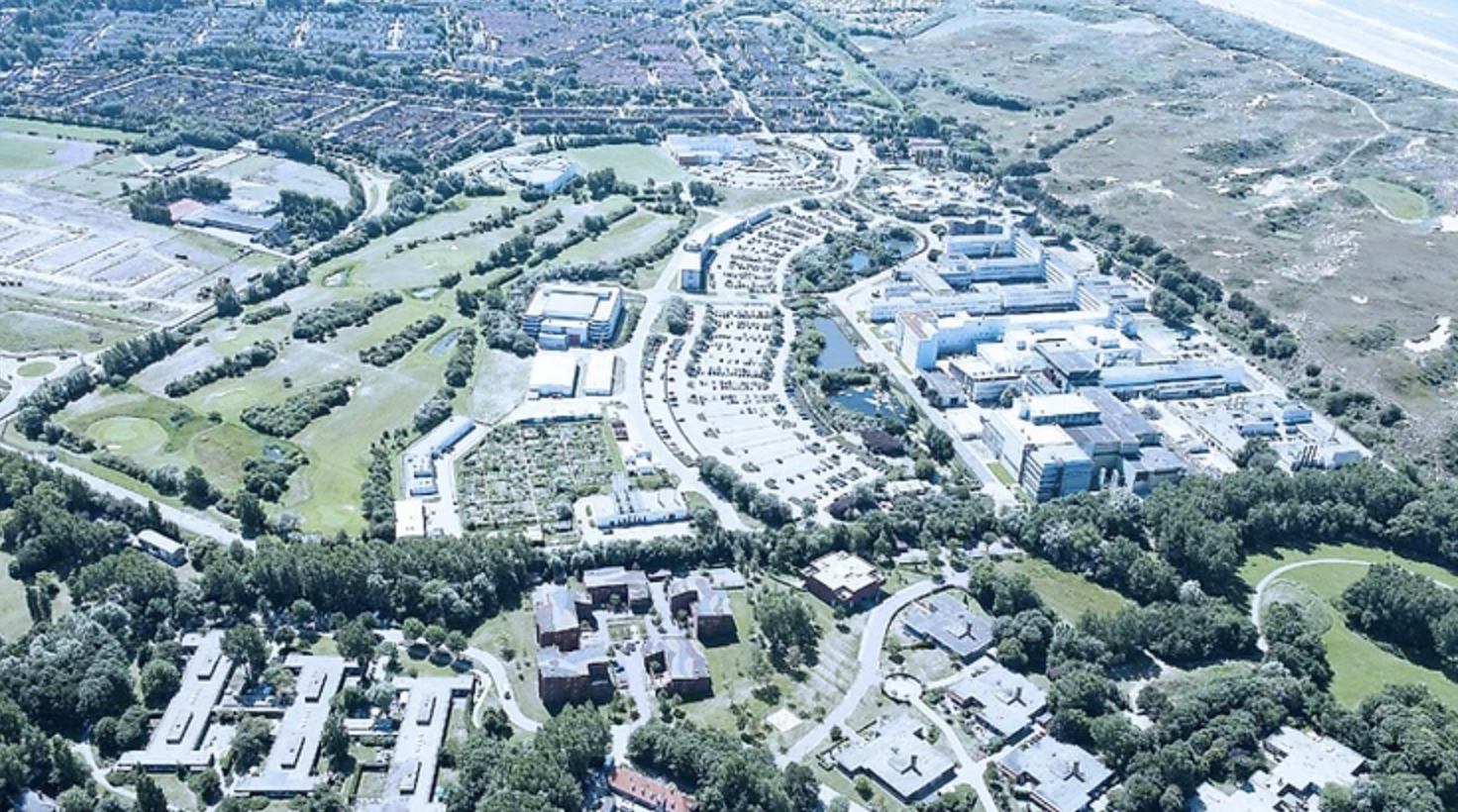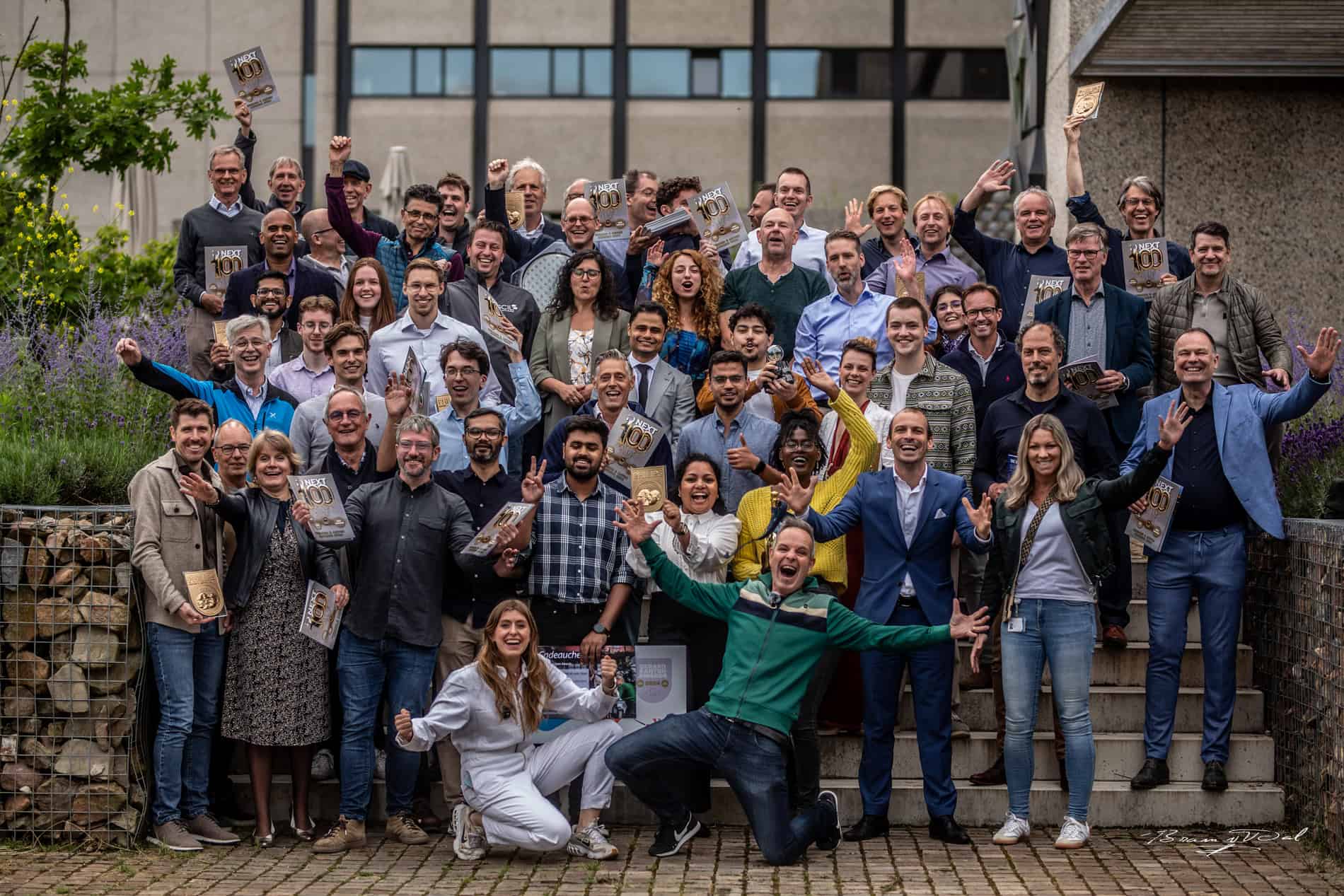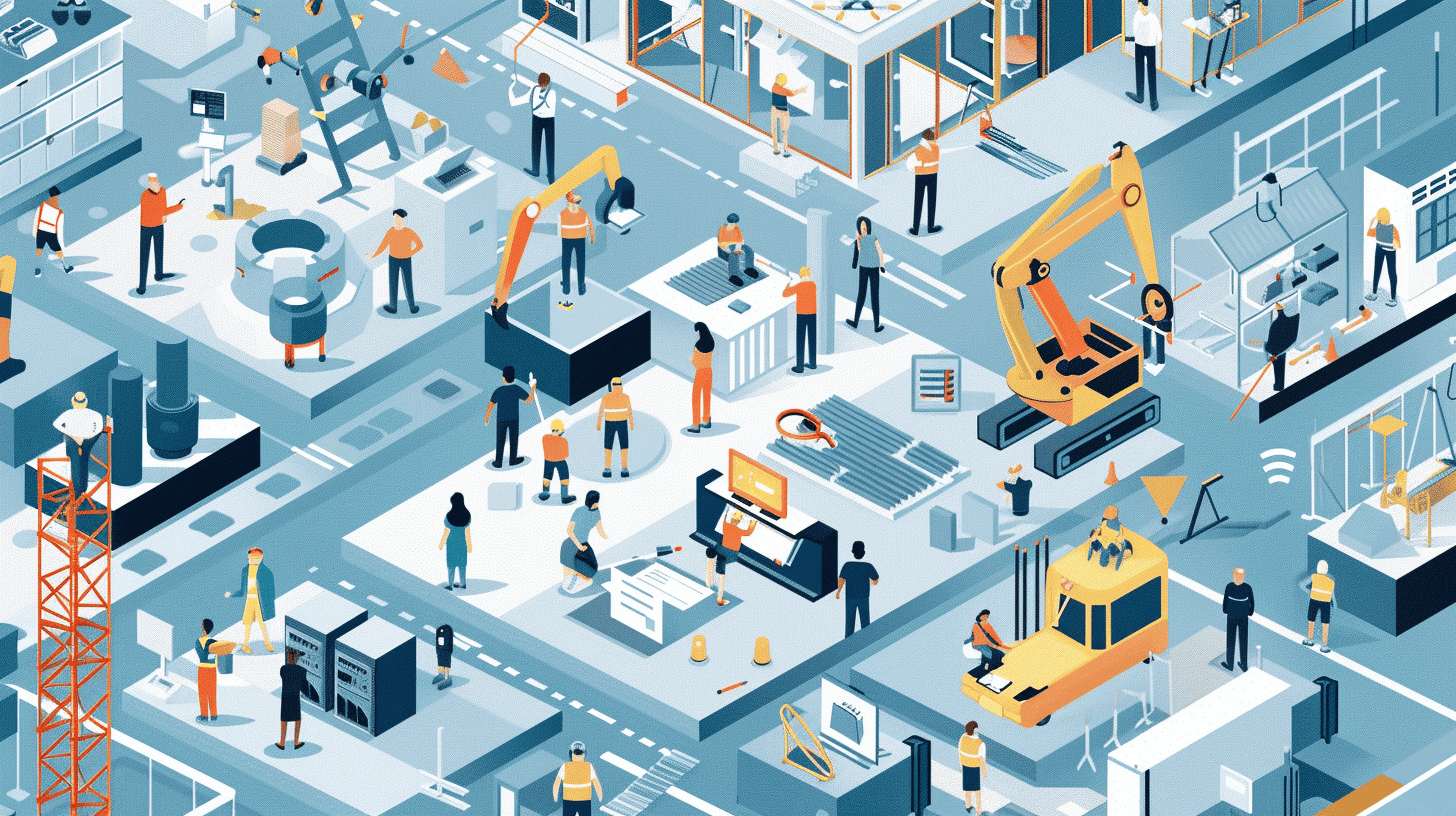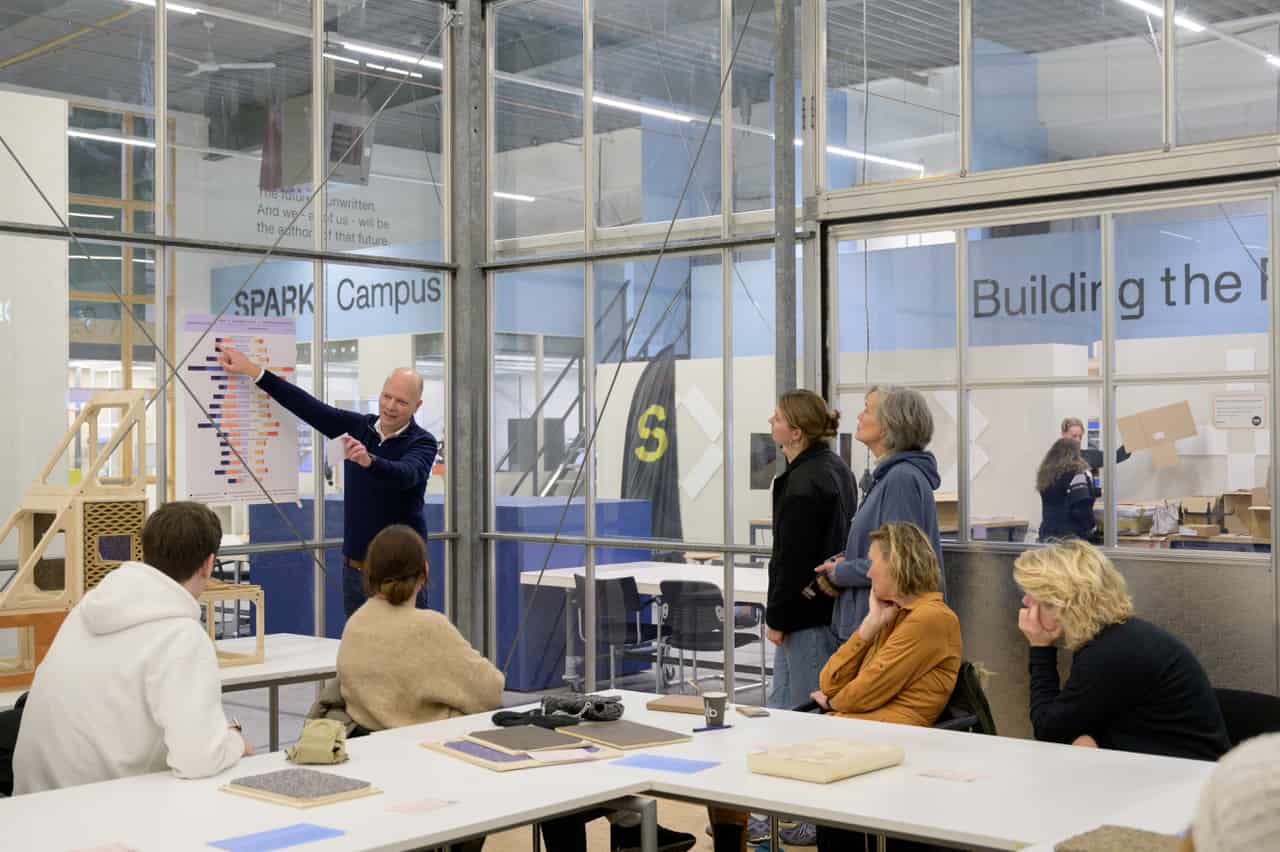
Whoever takes in the program of The Space Week can hardly escape a feeling of overwhelming. Every day of the 8-day program is bursting with events large and small to make it clear that space exploration not only touches everyone but is also accessible to all. Yes, it’s still rocket science, but the once impenetrable bastion has thrown open the gates. Even literally, during The Space Week from Sept. 25 to Oct. 2 at the NL Space Campus in Noordwijk and various locations in Leiden.
Velcro, the Tefal pan, autonomous cars, detecting methane leaking garbage dumps: space travel made it all possible. If there is one driving force behind The Space Week, it is the realization that the world cannot do without space travel. And so, the organizers of The Space Week – NL Space Campus, ESA ESTEC en Leiden European City of Science 2022, together with partners SpaceNed en Netherlands Space Office, are focusing both on companies and institutions and the general public. At the beginning of the week, the emphasis is on Leiden, after which it is mainly the NL Space Campus in Noordwijk where it happens.

NL Space Campus Director Esther Peters and her team have been working for months toward this week. “Everything to show what we are doing here, in the heart of the European space industry. Partly that will be for the people and companies already active in space, but emphatically also for other interested parties, from young to old. As our campus motto suggests, it is ‘connecting the curious’.” With that, Peters hopes to make space travel less mystical. “We open the doors and make people curious about everything that space has brought and will continue to bring to our society. Space is creating groundbreaking innovations in all sectors; the business community is now jumping in full force. By bringing that knowledge, ideas, questions, and people together, stimulating encounters, new developments arise. That is exactly what we are doing here at NL Space Campus in Noordwijk: creating a place for open innovation. And The Space Week makes that extra visible.”
South Holland is the heart of space exploration
Over 80 percent of space activities in the Netherlands are located in South Holland, more specifically in the area between Noordwijk, Delft, Leiden, and Rotterdam. With thousands of employees, the NL Space Campus in Noordwijk is the beating heart of that area and thus a connecting platform for this robust space ecosystem. “In size, with ESA ESTEC as the largest technological heart of the European Space Agency, the campus is the fourth R&D hub of the Netherlands and the largest space R&D center in Europe. Not for nothing do we expect audiences from all over the world in Noordwijk during the Industry Space Days and ESA ESTEC’s open day at the end of The Space Week,” says Peters.
The Space Week connects the permanent components of NL Space Campus with several one-time events. For example, the Space Expo, the permanent space exhibition on the campus grounds, is also one of the anchor points during The Space Week. Especially for children, the Expo has also invited the Space Buzz, a more than fifteen-meter-long rocket vehicle equipped with the latest virtual and augmented reality technologies. On board, children travel to space, where they see Earth through the eyes of an astronaut.
Every euro creates value

Being one of the key players on campus, Torben Henriksen, ESA director and head of ESTEC, is already fully engaged in The Space Week. “To be honest, it’s Space Week here every week, and Space Day every day. But such a week-long event full of activities obviously helps us very much to reemphasize that. On the one hand, we want to show our enthusiasm for what is happening here, but at the same time, we want to give our stakeholders a chance to see with their own eyes how we make it all happen. And by stakeholders, I mean first and foremost the taxpayers and their families. They need to know that every euro put into space creates value here on Earth.”
That value, for example, is in the navigation systems that help us stay on course. “You can use it to track your dog or your suitcase. It increases our safety and guides farmers with their tractors to the right spots in the fields. But it also makes autonomous driving possible. Space travel allows us to map CO2 and nitrogen emissions. And it ensures that a supermarket owner knows exactly how many empty spaces are left in his parking lot.”
Start-ups

The space data are accessible to everyone, which can lead to a lot of new activity. New start-ups are registering in Noordwijk regularly, as Martijn Leinweber, COO of Space Business Innovation Centre Noordwijk (SBIC), also knows. “These start-ups can gather new knowledge and business success thanks to space.” SBIC tries to connect knowledge and business, also during The Space Week. “Together with NL Space Campus, we do that with closed conferences and with open networking events. Everything is done to share knowledge and bring start-ups in contact with researchers on one side and investors on the other. So that they can help the world move forward thanks to the endless knowledge from space.”
Niels Eldering, head of ESA Business Incubation and PhiLabNet, sees these startups focusing not only on using data from space for new terrestrial applications but also on space itself. “That’s a trend that has become visible lately. Space data are much more accessible than before, more and more parties are taking steps in that direction and we are happy to help them do that.” According to Eldering, The Space Week is the ideal place for tomorrow’s start-up to meet those from today and yesterday. “So they can exchange knowledge and experiences. And who knows, maybe one can be the other’s supplier or customer. Or their investor.”

Because of his work with startups, Eldering sees trends earlier than many others. “When Galileo and Copernicus started, it started with promise, but you soon saw start-ups capitalizing on it by starting to develop services based on the data from these projects. Ten years ago, it was mostly tech transfer, then it became more and more application-driven. Meanwhile, the growth continued; by now, we have seen 1,300 startups emerge here, and dozens more arrive every year. An increasing proportion of them is actually going into the space.” Eldering expects this trend to continue more and more toward large companies. “Just look at Tesla; space is also an ideal field of operation for the automotive sector.”
NL Space tent

One of the components of The Space Week is the NL Space tent, an initiative of the Netherlands Space Office (NSO). In that tent, during the ESTEC Open Day on Oct. 2, over forty large and small companies from the Dutch space sector will gather. Many ESA-BIC startups, but also a party like Airbus. Again, the focus is on getting interested parties excited about working with the results of space research, says NSO’s Jasper Wamsteker. “Space has become very accessible. From high school, you can dream about a job in space, for example, working with satellites. It’s really within reach, and we want to make it as easy as possible to learn about all those possibilities.”
Special attention is also being paid to Tropomi, the Dutch satellite instrument aboard the ESA satellite Sentinel-5 Precursor. Wamsteker: “There is a moderated program with specialists who explain in layman’s terms the enormous social added value of Tropomi. For example, thanks to Tropomi, we know the landfills of Brazil and India emit a large proportion of the powerful greenhouse gas methane. We see pipeline leaks, so we can act and plug the holes. But we can also track real-time emissions from marine vessels. Zooming in at 7×7 kilometers, we can see, in short, air quality at ground level. And what makes it all extra valuable: all these data, just like the other satellite data from the European Copernicus program, can be freely used by anyone who wants it; we agreed to this in a European context at the start of Copernicus.”
Navigate to the Future

Bas van der Hoeven, Vice President of Space CGI Netherlands and Board Member of SpaceNed, is also looking closely at the added value of space data in our daily lives. “With data from space, all kinds of applications are possible for society. For example, with the help of satellites, risks in horticulture can be controlled, waterways monitored, and light pollution signaled. With help from space, government and the market can work together to solve social issues in various fields.”
During The Space Week, this will become visible through the Navigate to the future event, which the GNSS Centre of Excellence is organizing with NL Space Campus. “With about a hundred listeners and participants, we want to show how we can make space data applicable and useful. Space travel is no longer only an extremely expensive toy for boys. There are already lots of “regular” users of space data. With panel discussions between companies, governments, and other public services, we’ll make that all concrete.”
Part of this event is the official launch of the GNSS Center of Excellence at NL Space Campus, which aims at structurally connecting users with satellite data. “This Center of Excellence can become the missing link between the pooling of knowledge that has taken place in recent years around the Galileo Reference Centre here on the campus and the parties that will use the data collected there for society.”
The users Van der Hoeven wants to serve can range from large energy companies, farming companies, and financial parties to individual researchers or start-ups. “The whole of society, experienced and new; anyone who wants to do something useful with data from satellite navigation.” The initial impetus for the Center of Excellence will come from the government and Netherlands Space Office NSO, but ultimately it must be self-supporting.
Leiden European City of Science 2022

Lucien Geelhoed is the intendant – the architect of the content part – of Leiden European City of Science 2022, an essential partner for The Space Week. He began filling out the program day by day on Jan. 1 of this year to make visible why Leiden has been awarded the title European City of Science 2022. “The Space Week is an important part of that journey for us. With institutions like the Oude Sterrewacht, the LUMC, SRON, and Rijksmuseum Boerhaave, we have the ideal locations for this. Leiden has, especially in the first weekend of The Space Week, plenty of events highlighting how important the city is to space exploration.”
With lectures by Vincent Icke, Ewine van Dishoeck and others, LUMC will have plenty of focus on space exploration in its breadth and the achievements of the James Webb telescope in particular. Photographs taken with the telescope are on display, and a scale model is on hand to give visitors an idea of the complexity of the device. “Astronomy belongs to all of us,” Geelhoed stresses. “Especially here in Leiden. We are a city of knowledge where science and society are closely linked.” According to Geelhoed, it is only logical that SRON, which focuses entirely on space research, has taken up residence on Leiden University’s campus. This institution is also open for a day during The Space Week.
There is also an artistic element in Leiden’s programming, with the event ‘Seeing Stars‘ by Daan Roosegaarde. Geelhoed: “That is about our right to see stars. Nowadays, there is so much light pollution on earth that this right is no longer self-evident. By turning off as many lights as possible around the Old Observatory, we want to be able to see the stars again.”
10,000 visitors
Whereas Leiden takes center stage for the general public mainly at the beginning of The Space Week, for Noordwijk it is at the end of that week. On the open days on Saturday (especially for the disabled) and Sunday, there will be a wide variety of space-related activities for which close to 10,000 visitors are expected. ESTEC will show there, for example, how new satellites get their baptism of fire, almost literally. “Almost all ESA satellites are tested and checked at ESTEC,” adds Jasper Wamsteker. “Think of vibration simulations or heating and cooling between -150 and +150 degrees. This is done in a vacuum tank, a real torture chamber for new satellites. That is a powerful thing to see for laymen and professionals alike.”
Esther Peters is convinced that the dozens of program elements will again further increase the accessibility of space exploration. “On the one hand, that happens by bringing professionals into contact with each other so that new research and new entrepreneurship can emerge. But just as important for all of us are the curious laypeople. Everyone here is ready to explain what we do here and why it is so important and decisive for our society. Above all, come and see for yourself – I can already assure everyone that you will not be disappointed.”
View the entire program of The Space Week here. Please note that pre-registration is required for some program elements.









